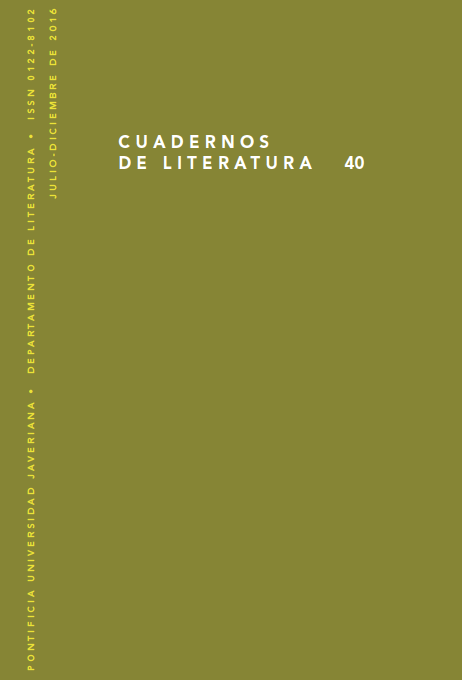Abstract
Analizo la película XXY de Lucía Puenzo (Argentina, 2007) desde el punto de vista de la relación entre la materia viviente de la zona costera uruguaya y la propuesta del film con respecto a la diversidad sexual. Sugiero la expresión “anfientidad sexual” para distinguir la manera en que el film representa la relación entre cuerpo, sexo y género al ficcionalizar un caso intersex a través de asociaciones entre los animales humanos y los anfibios y reptiles del ambiente costero, en especial las tortugas marinas que migran cruzando el Atlántico y que se encuentran en peligro de extinción. En tanto las tortugas determinan su sexo dependiendo de la temperatura del ambiente, representan un dinamismo relacional singular de la materia viviente, que corre peligro de extinguirse en nuestra era y que el film asocia con la variación sexual.
Cuadernos de Literatura is registered under a Creative Commons Attribution 4.0 International Public License. Thus, this work may be reproduced, distributed, and publicly shared in digital format, as long as the names of the authors and Pontificia Universidad Javeriana are acknowledged. Others are allowed to quote, adapt, transform, auto-archive, republish, and create based on this material, for any purpose (even commercial ones), provided the authorship is duly acknowledged, a link to the original work is provided, and it is specified if changes have been made. Pontificia Universidad Javeriana does not hold the rights of published works and the authors are solely responsible for the contents of their works; they keep the moral, intellectual, privacy, and publicity rights.
Approving the intervention of the work (review, copy-editing, translation, layout) and the following outreach, are granted through an use license and not through an assignment of rights. This means the journal and Pontificia Universidad Javeriana cannot be held responsible for any ethical malpractice by the authors. As a consequence of the protection granted by the use license, the journal is not required to publish recantations or modify information already published, unless the errata stems from the editorial management process. Publishing contents in this journal does not generate royalties for contributors.


